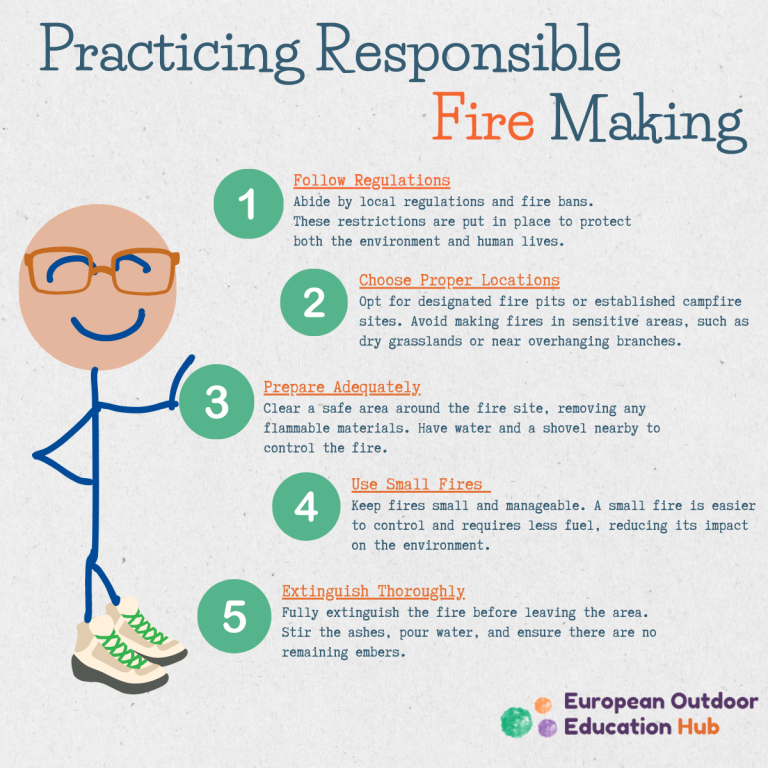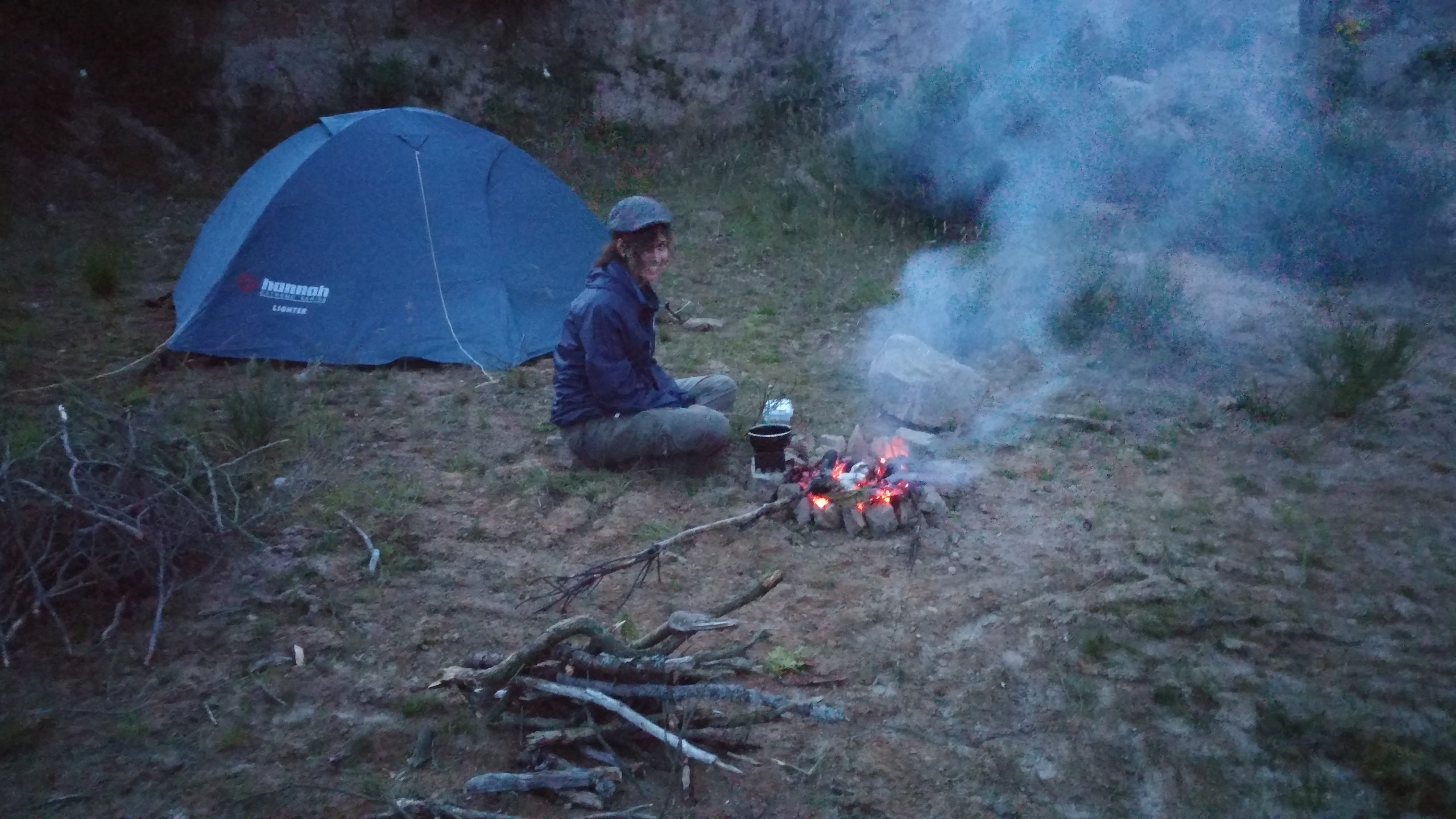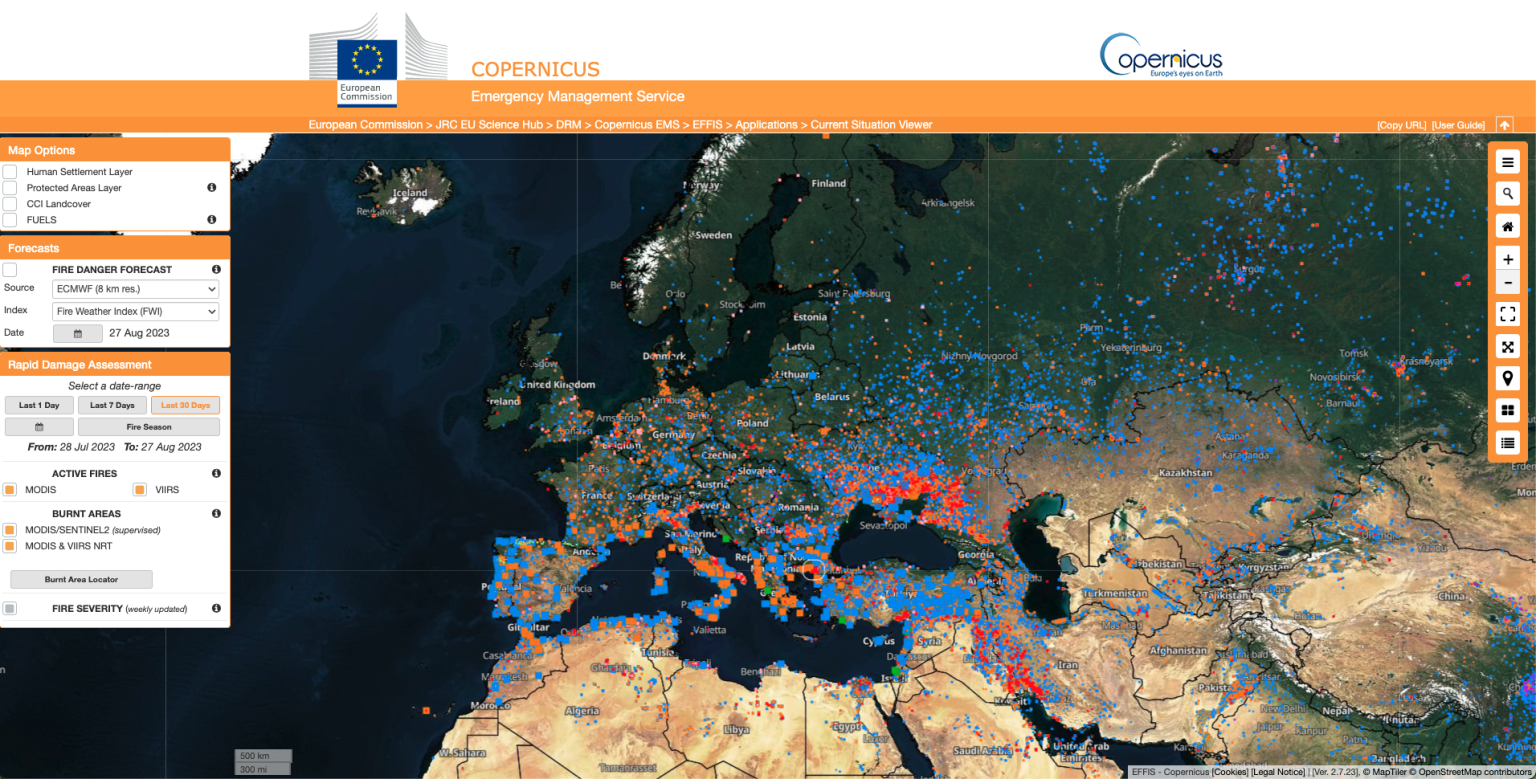Introduction
Outdoor education provides a valuable opportunity for individuals to connect with nature, learn essential survival skills, and develop a deeper understanding of the environment. Among these skills, fire making stands out as one of the most fundamental and versatile abilities. However, it comes with a responsibility to understand the risks associated with fire and to assess those risks before starting one. In Europe, where a diverse range of landscapes beckons adventurers, staying informed about the current fire risks is crucial.
Just as fire can be tamed to provide comfort and sustenance, it can also be an untamed force, capable of devastation. The skill of fire management is a delicate one, requiring a deep understanding of its behavior and a respectful approach. Teaching children about fire from an early age not only imparts valuable survival skills but also instills a sense of responsibility towards the environment. Knowing how to kindle and extinguish fire is an education that can never be too extensive.
This article explores the art of fire making in outdoor education and provides insights into where to check the risk of fires in Europe.
The Significance of Fire Making in Outdoor Education
Fire making is a primal skill that has played a pivotal role in human survival for millennia. In outdoor education, mastering fire making serves multiple purposes:
1. Survival/ Fire provides warmth, cooks food, and purifies water, all of which are essential for human survival in the wilderness.
2. Safety/ A well-maintained campfire can deter wildlife and act as a signal for rescue teams in emergency situations.
3. Learning/ The process of gathering tinder, kindling, and fuel wood fosters an understanding of local flora and ecosystem dynamics.
3. Cultural Connection/ Learning traditional fire-making techniques can help individuals connect with indigenous cultures and their deep-rooted relationship with the environment.
Understanding Fire Risks in Europe
Before starting a fire in an outdoor setting, it is crucial to assess the fire risk. Europe is home to a variety of climates, landscapes, and regulations, making fire risk assessment a diverse and complex task. Fortunately, there are resources available to help outdoor enthusiasts stay informed:
- National Websites and Apps. Many European countries provide official websites and mobile apps that offer real-time information about fire risks and bans. These platforms often include interactive maps, fire danger ratings, and guidelines for safe fire use.
- European Forest Fire Information System (EFFIS): Run by the European Commission, EFFIS monitors and reports on forest fire risks and incidents across Europe. The system provides valuable data and maps that help individuals make informed decisions about fire activities.
- Local Authorities and Parks: Local forestry departments, national parks, and other relevant authorities often publish fire risk information on their websites. They may also provide guidelines for fire-safe practices and any temporary fire bans.
- Fire Danger Rating Systems: Some countries use fire danger rating systems that consider factors such as weather conditions, fuel moisture, and historical fire patterns to assess the risk of fire. These systems help individuals understand the level of caution required.
Practicing Responsible Fire Making
While fire making has its benefits, it must be approached responsibly to minimize its ecological impact and ensure safety. Here are some essential guidelines:

1. Follow Regulations: Abide by local regulations and fire bans. These restrictions are put in place to protect both the environment and human lives.
2. Choose Proper Locations: Opt for designated fire pits or established campfire sites. Avoid making fires in sensitive areas, such as dry grasslands or near overhanging branches.
3. Prepare Adequately: Clear a safe area around the fire site, removing any flammable materials. Have water and a shovel nearby to control the fire.
4. Use Small Fires: Keep fires small and manageable. A small fire is easier to control and requires less fuel, reducing its impact on the environment.
5. Extinguish Thoroughly: Fully extinguish the fire before leaving the area. Stir the ashes, pour water, and ensure there are no remaining embers.
Conclusion: Guiding the Flame, Nurturing the Bond
In guiding your students through the journey of fire making, you not only impart practical skills but also nurture a profound connection with the natural world. By instilling respect, responsibility, and a deep understanding of fire’s significance, you empower the next generation of outdoor enthusiasts to embrace the dance of light and fire with wisdom and care. As the flames flicker and cast their mesmerizing glow, students grasp not only the techniques of fire mastery but also the essence of their role as stewards of the environment. This primal dance, rooted in ancient history yet ever-relevant, kindles a reverence for nature’s elements that will continue to burn brightly in their hearts. Just as fire shapes landscapes, your guidance shapes their perspectives, paving the way for a future where the art of fire making illuminates not only the night sky but also the path towards responsible, enriching outdoor exploration.



